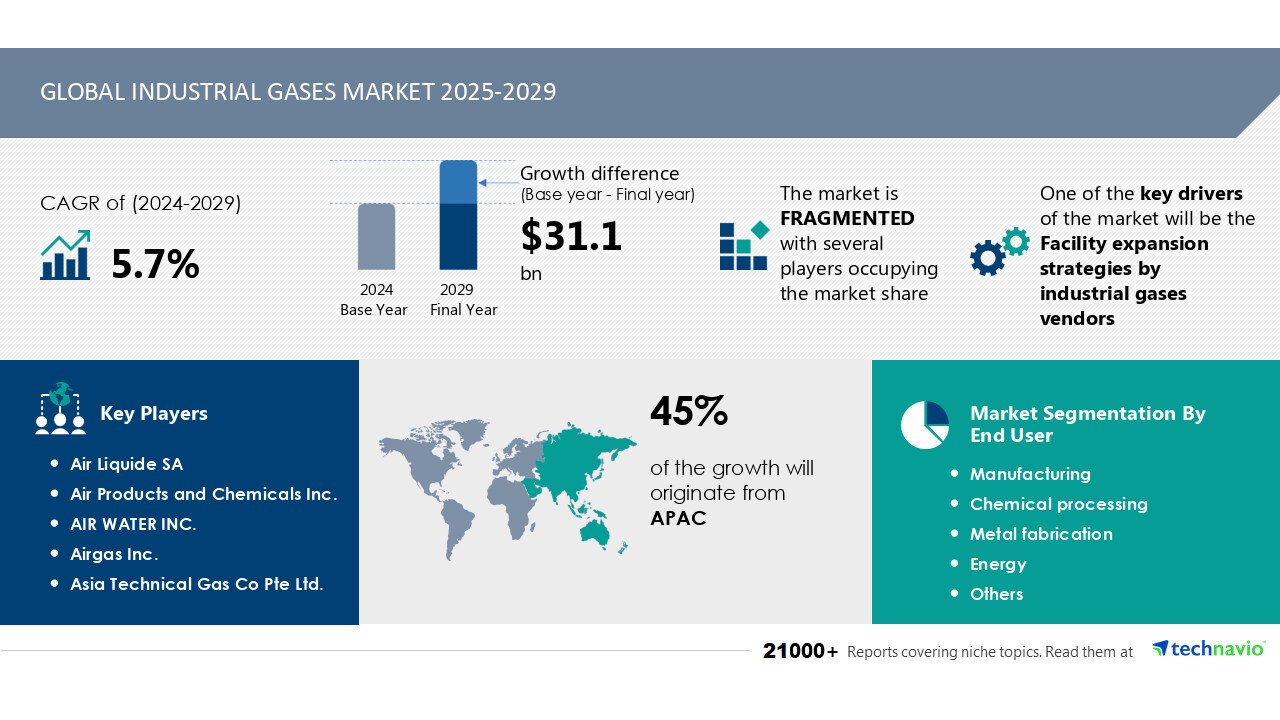Industrial Gases Market to Grow by USD 31.1 Billion (2025-2029)
Market Drivers
Industrial gases such as nitrogen, hydrogen, and oxygen are in high demand across various sectors, including chemicals, fertilizers, electronics, and food processing. The agriculture industry requires nitrogen for fertilizers, while hydrogen is essential for ammonia production. The growth of the frozen food market is driving demand for carbon dioxide as a refrigerant.
Hydrogen is also a crucial component in semiconductor manufacturing, fuel cells, and electronics production. In the steel industry, gases like oxygen and argon are used in metal smelting and refining processes. Additionally, wastewater treatment facilities utilize industrial gases for purification and environmental remediation.
The market is dominated by major players such as Linde Plc, Air Liquide SA, Messer SE & Co. KGaA, and Air Products and Chemicals Inc. The cylinder segment remains a key distribution method, with steel and composite aluminum cylinders widely used for transport.
Mergers and Acquisitions Driving Growth
Large industrial gas companies are increasingly pursuing M&A strategies to expand market share and improve operational efficiency. In May 2023, Air Products announced a USD 1 billion investment agreement with the Government of Uzbekistan and Uzbekneftegaz JSC to acquire a natural gas-to-syngas processing facility. Similar acquisitions are expected across the industry to enhance product portfolios and meet evolving customer needs.
Challenges in Gas Distribution and Safety
Despite market growth, challenges persist in the safe handling and distribution of industrial gases. Even small impurities can impact industrial processes, particularly in food, beverage, and healthcare applications. Strict safety regulations are in place to prevent hazards, particularly in sectors dealing with carbon dioxide, acetylene, and other specialized gases.
Transportation methods include pipeline networks, bulk shipping, and cylinder-based distribution. The automotive, aerospace, and energy sectors are also increasing their use of industrial gases, with growing demand for hydrogen in fuel cells and carbon capture applications.
As the market evolves, industry players continue to focus on efficiency, sustainability, and expanding their global reach to meet rising demand.
Read More
